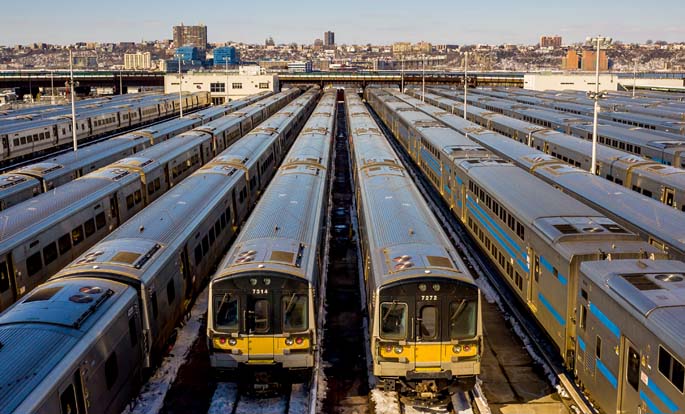
Mass transit supporters argue that the federal government has a strong bias for highways over transit since the federal funding split is about 80/20. But competition for federal transit funds is not a level playing field either, and new rules seem unlikely to change that.
Regions and applicant agencies face intense competition under “New Starts”, a major federal program for transit infrastructure. The Federal Transit Administration (FTA) generally considers the extent and reliability of local financial support for projects to be as important as the benefits projects actually bring.
Congress and the FTA have continually changed how they evaluate projects and the data that applications require. Because some applicants have fewer resources to carry out calculations, they are at an inherent disadvantage. All applicants devote substantial time and resources to calculating benefits, but generally high benefits ratings may not improve the odds of getting an award. The extent of local financial support seems to carry substantial weight no matter what other metrics FTA uses.
Changing the rules
In 2013, the Federal Transit Administration issued new rules to simplify this process and also to incorporate a range of additional or secondary benefits from rail projects. A research brief, by Sandra Rosenbloom and me, covers the newest changes in more detail. Rail proponents have argued that previous evaluations did not allow applicants to claim many indirect benefits from rail investments, such as creating denser land use and fostering a greater sense of community. Under the new rules, applicants may claim indirect reductions in vehicle miles traveled as a benefit. And, simpler metrics for mobility benefits could theoretically help small or underfunded agencies to compete more effectively.
But if federal awards are driven by the availability of local financial resources more than project benefits, these new ways of measuring project benefits may have little impact. An in-depth study of projects from FY 1998 to FY 2011 showed that a project’s local financing had a statistically significant relationship with winning federal funds, but a project’s benefits (as rated by the FTA) did not. Thus, if local funding remains the criterion in effect, the Federal Transit Administration is still less likely to fund projects proposed by transit agencies with high debt, older vehicles, or limited resources. Because local business and political leaders often prioritize economic development, projects with secure local financial support—and subsequently federal funds—may tend to be based more on economic development aspirations than on public transportation needs.
Changing the rules without changing the game
The new rules may not level the playing field. Federal money may go to elite-favored projects because those projects could garner local resources while cost-effective projects that improve public transportation fail to receive adequate financial ratings or even enter the federal pipeline at all.
Instead of constantly changing the rules, we could re-think the game by expanding federal support for operating costs and transit agency capacity. Increased transit frequency, speed, and reliability could attract new riders while improving access to opportunities and improving quality of life for vulnerable households. Incremental enhancements that improve the quality of existing transit service, coupled with federal support for operating costs, would be a more equitable and potentially more effective federal approach to improve public transportation.
Tune in and subscribe today.
The Urban Institute podcast, Evidence in Action, inspires changemakers to lead with evidence and act with equity. Cohosted by Urban President Sarah Rosen Wartell and Executive Vice President Kimberlyn Leary, every episode features in-depth discussions with experts and leaders on topics ranging from how to advance equity, to designing innovative solutions that achieve community impact, to what it means to practice evidence-based leadership.
